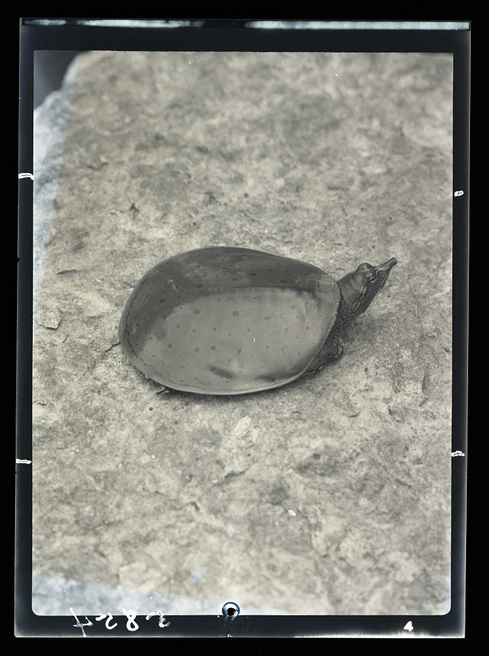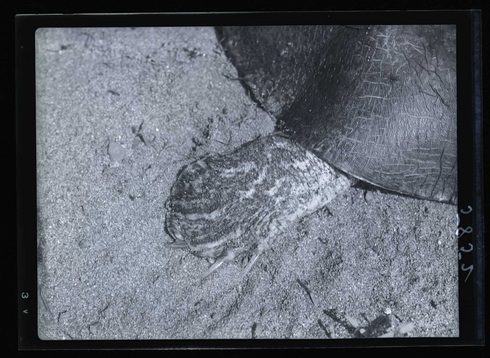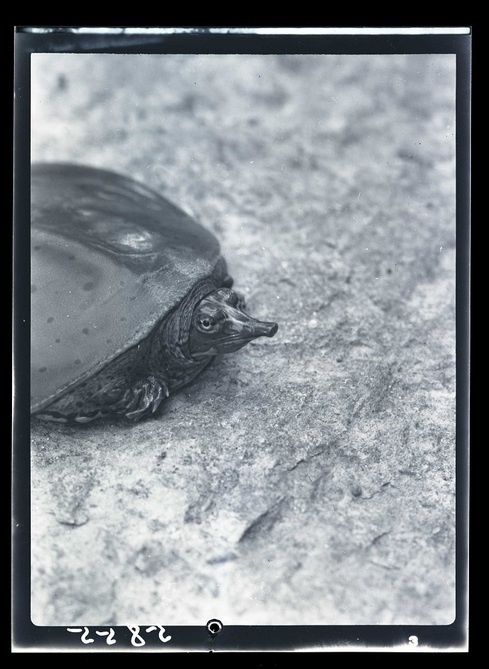In addition to preparing specimens for exhibits and giving talks to museum visitors about mammals and birds during his tenure as curator and director of the Bell Museum of Natural History (1926-1970), Walter J. Breckenridge was also involved with academic pursuits. As he revealed in his autobiography, My Life In Natural History, Breckenridge completed a Masters degree in 1934 and earned a Ph.D. in 1941.
What did he study? Breckenridge shared this background in his autobiography –
“In choosing my Ph.D. subject I had little trouble in choosing the reptiles and amphibians of Minnesota. Dr. Gustav Swanson had made a small collection of these animals while on the staff of the Bell Museum. This was just getting under way when he accepted a position elsewhere and since then little had been done on the herpetology of the state. Thus the field appeared to be open for some serious attempts to expand our knowledge of the subject as an appropriate research field for the Bell Museum to undertake.”
Breckenridge spent seven years observing the habits and tracking the behaviors of snakes, lizards, toads, turtles and more. His Ph.D. work resulted in another book- Reptiles and Amphibians of Minnesota.
Here is a story about one of the species he studied, as told by Breckenridge in his autobiography:
Much of the wildlife we have in our mini-wilderness home on the River we get personally acquainted with, such as the deer, squirrels, geese, wood ducks and chipmunks. But one we only see rarely in summer, and, believe it or not, it hides deep in the mud of the river banks for the entire late fall, winter, and early spring. This is the spiny soft-shelled turtle (Apalone spinifera) which is really quite abundant here in the Mississippi. This being a reptile that I would be including in my book Reptiles and Amphibians of Minnesota I felt I should learn more about it, especially since it was so abundant in the river right in front of my home. While lunching on our little deck over looking the river, we would occasionally see one of these turtles pull itself up onto an exposed rock and simply lie there sunning itself for as much as an hour. They appeared in various sizes from a couple of inches to well over a foot across. A question often asked about these big turtles was “How old would this big one be?” This simple question was not answered in the books I found available so I decided to find the answer myself which turned out to be a really time consuming bit of research.

– Spiny softshell Turtle, Mississippi River, Hennepin County, July 21, 1940
“I tried several types of traps and settled on a barrel-shaped structure made of a number of wire loops covered with cord netting closed at one end with a slit-like opening at the other. Since turtles are largely scavengers, I baited my traps with meat placed in a punctured tin can in the back of the trap. The odor of the meat drifted down stream where the turtles would follow it up and into my traps. With the help of my teenage son, Tom, we set and tended several traps for short periods over seven summers (1948-55) and we succeeded in capturing 170 turtles. Once taken, we dropped them into a large sack and climbed the muddy riverbank to the house where we weighed each specimen and measured the width and length of its shell. We then marked each with a semi-circular notch cut in the rim of the flexible leathery shell with a leather punch. Two or three notches arranged like the hours on the face of a clock enabled us to recognize individually each turtle trapped. These were then released in the river where we hoped to recapture them later. Many of them reappeared in our traps several times. One of them we took seven years after it was originally marked.”

– Spiny softshell Turtle, Frontenac, Goodhue County, June 8, 1940
“With the mass of data secured, we were able to construct graphs indicating the rate of growth of many individuals over varying periods of time and these combined to answer the question “How old are some of these big turtles?” We were a bit surprised to find that these turtles never did grow up to an adult size but continued to grow throughout their lives but at a slower rate as they grow older.
Females grow to be much larger than males. The largest female reached a length of 17 ½ inches, which proved to be, according to my calculations, a bit over fifty years old. In the case of males, the largest was only 7 ¾ inches in shell length. So few males were recaptured it did not seem feasible to attempt accurate age determinations for them. This study resulted in a five-page article in the herpetological magazine Copei for February 18, 1955.”

– Spiny softshell Turtle, Mississippi River, Hennepin County, July 21, 1940